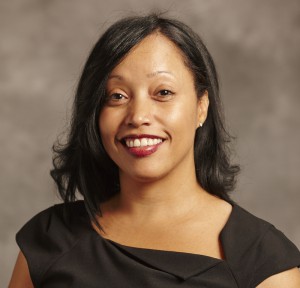Share This
Related Posts
Tags
Alfrieda Green
By Leah Etling on Apr 20, 2015 in People
Beginning this June, the city of Chicago has mandated utility benchmarking for all commercial buildings larger than 50,000 square feet. Urban Innovations, which manages 11 pr operties totaling 750,000 square feet in the Windy City, is one of a handful of property managers that already has nearly 8 years of such data already in hand.
operties totaling 750,000 square feet in the Windy City, is one of a handful of property managers that already has nearly 8 years of such data already in hand.
Yardi client Urban Innovations started benchmarking utility use at all its properties back in 2008. Alfrieda Green, Vice President of Property Management for the firm, recently shared why the company came early to the sustainability challenge and how its owners and tenants have benefited.
When did Urban Innovations start benchmarking utility performance and why?
Green: Around 2006-2007, sustainability suddenly became a hot topic. We had some of our tenants come to us and require-LEED certified space. At that point, once there is market demand, you have to educate yourself. I earned by LEED AP designation with an operations and maintenance specialization. The more I learned, it became clear that this was about operational best practices and sound asset management as well as meeting our tenant needs. It was clearly something that could have financial benefits and operational benefits, as well as customer service benefits.
So you started tracking utility performance, and what did you learn?
Green: Our first initiative was to benchmark every building in our portfolio, and give ourselves a baseline on how are we performing. It gave us some really interesting information on how our buildings were performing from an energy efficiency standpoint. It really directly correlated with where that particular property was in its life cycle. If the building had older equipment, it made sense for it not to be quite as efficient. But we also found that some buildings that had older equipment had had strategic upgrades and were performing better. So really, it was a process of obtaining informational knowledge and it gave us a path to efficiency.
Were there any surprises?
Green: Yes. The first year we benchmarked, I had few buildings that were performing poorly and I wasn’t expecting it. So I went to my maintenance manager and said, why is this? I can’t stress enough how critical it is to involve your field staff. They immediately explained why. These are the things that will improve once we either upgrade equipment or make a change. So it’s really about sharing information within your organization. The benchmarking ordinance is just data – it’s nothing to be afraid of.
So you made changes as a result of the data?
Green: We could see the future of efficiency within our portfolio. Since receiving our first Energy Star certification in 2008, we have completely redeveloped a property and made it LEED certified. We have structured our capital improvements plan in a way that we strategically look at underperforming buildings and see what it would take for that building to perform better. Enhanced energy efficiency translates to improved financial performance.
Right now we have six Energy Star buildings, one LEED certified building, we have participated in several programs – the Chicago Green Office Challenge, the Environmental Defense Fund (EDF) Climate Corps program, and we’re signed on for the Retrofit Chicago Commercial Building initiative, which is a pledge to reduce our energy consumption by 20 percent over the next five years.
And you’ve been talking to other Chicago owner/managers about the benefits of such tracking and property updates?
Green: Class B and class C properties have historically have not participated in this discussion. Because of the benchmarking ordinance that has taken effect, now a lot of older buildings are required to do this. There’s a great push to reach out to that particular group and help them understand.
With the EDF and our local chapter of the USGBC, we recently hosted class B & C office owners to come and learn about the benchmarking code as well as our case study. Some people were completely unfamiliar with what benchmarking was and what it would take for them to comply with the new code requirement.
The benchmarking ordinance is simply compiling data, and getting information that you can choose to act on, or at least consider, for a particular asset. What I tried to impress upon everyone there was that its information which is either going to show you that you are doing well or that there is room for improvement.
What’s next for Urban Innovations on the sustainability project list?
Green: We’re participating in Retrofit Chicago and will be doing a second year with the EDF Climate Corps program. For Retrofit Chicago, we looked at our 5 year capital plan and identified properties with planned capital improvements where we can really achieve a 20 percent reduction. Our new EDF initiative will help us with branding our sustainability program so that’s easily understood and utilized by our organization internally as well as externally with our tenants.
Has this work prompted you to achieve sustainability in your personal life?
Green: This is one of those examples where taking your work home can be a good thing. Everything that I have learned, through the designations and the education, I took home. I bought an Energy Star certified home and have realized these types of benefits away from work. My family now puts out more recycling each week than we do trash.
